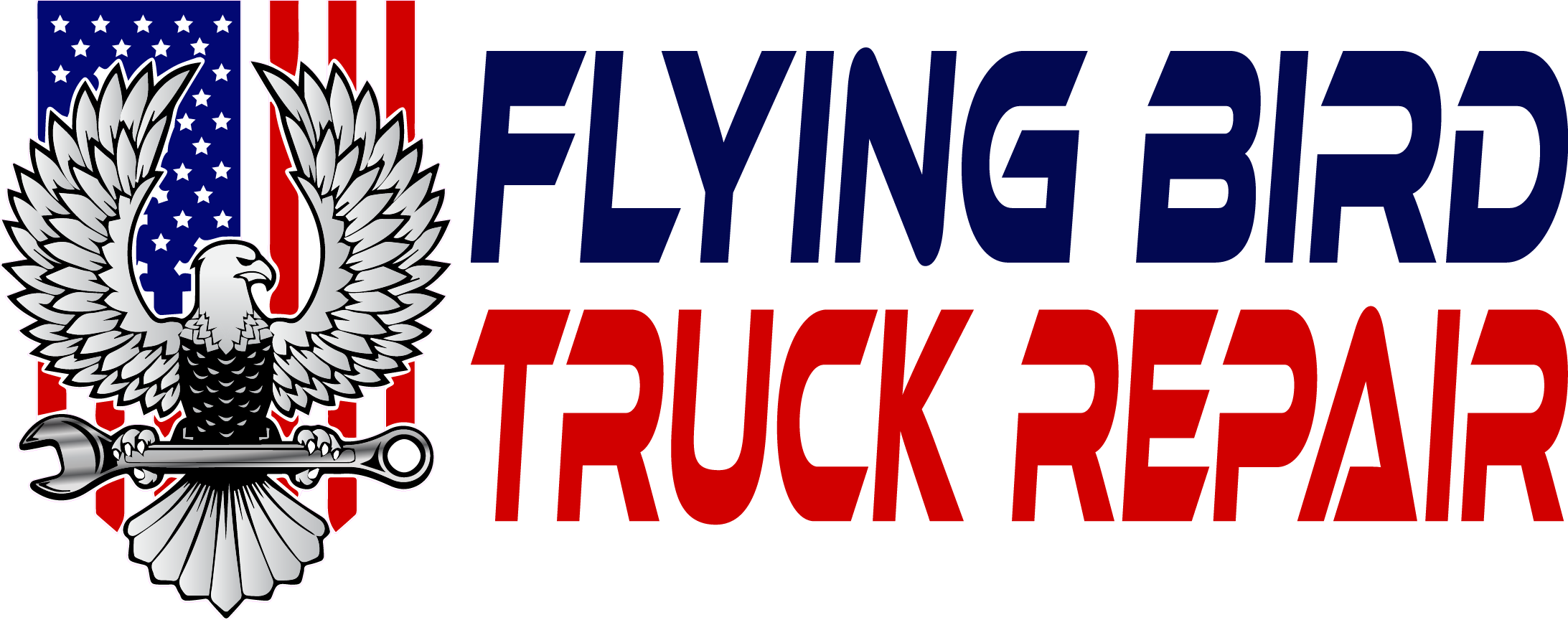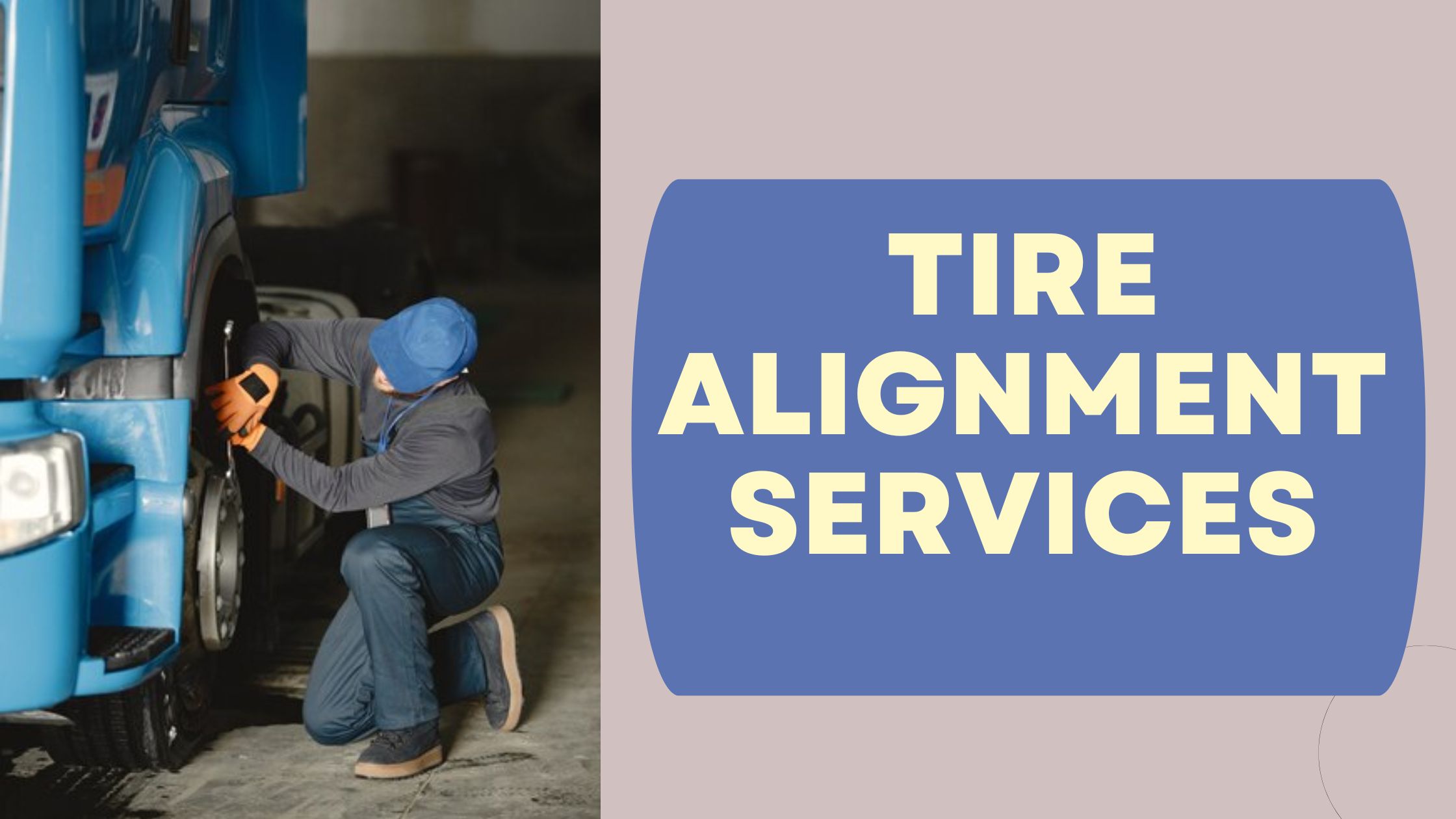Key Highlights
- Proper tire alignment can extend the life of your tires, saving you on frequent replacements.
- A properly aligned car improves fuel, saving you money on gas.
- Regular tire alignment helps prevent uneven tire wear, which can lead to costly repairs.
- Signs that your car needs an alignment include uneven tire wear, a steering wheel that is not centered, and the vehicle pulling to one side.
- It is recommended get your tires aligned least once a year if you notice any signs of misalignment.
- Taking car to a trusted alignment service help ensure the job is done correctly the first time.
Introduction
Having a well-maintained vehicle is essential for both your safety and your wallet. While regular maintenance tasks like oil changes and tire rotations are often top of mind, one aspect that is often overlooked is tire alignment. Proper tire alignment, also known as wheel alignment, plays a crucial role in the overall performance and longevity of your tires, as well as your vehicle as a whole. Not only does it ensure that your tires wear evenly, but it also improves fuel efficiency and enhances your driving experience. In this blog post, we will delve deeper into the importance of tire alignment and how it can save you money in the long run.
Understanding Tire Alignment
Before we discuss the financial benefits of tire alignment, let’s first understand what it entails. Tire alignment, also referred to as wheel alignment, is the process of adjusting the angles of the wheels to the manufacturer’s specifications. This adjustment ensures that the tires are perpendicular to the road and parallel to each other. When your tires are properly aligned, they will wear evenly, resulting in a smoother ride and increased tire lifespan. On the other hand, if your tires are misaligned, they can wear unevenly, leading to premature tire wear and potentially costly repairs.
What Is Tire Alignment?
Tire alignment is a critical aspect of vehicle maintenance that involves adjusting the angles of the wheels to ensure they are perpendicular to the road and parallel to each other. This adjustment, also known as front alignment, is done by a professional technician using specialized equipment at an alignment service center. During the alignment process, the technician will measure and adjust three main angles: camber, caster, and toe.
Camber refers to the inward or outward tilt of the wheels when viewed from the front of the vehicle. An excessive positive or negative camber can cause uneven tire wear and handling issues.
Caster refers to the angle of the steering axis when viewed from the side of the vehicle. It helps with stability and steering control.

Toe refers to the angle at which the tires point inward or outward when viewed from above. Improper toe alignment can cause the vehicle to pull to one side and result in uneven tire wear.
Proper wheel alignment ensures that all these angles are within the manufacturer’s specifications, allowing for optimal tire performance and vehicle handling.
Why Is Proper Alignment Important for Your Vehicle?
Maintaining proper alignment is essential for the overall performance and safety of your vehicle. When your wheels are properly aligned, your vehicle will handle better, providing a smoother and more comfortable ride. It also improves steering responsiveness and reduces the strain on your suspension system.
Proper alignment can prevent premature tire wear, which can save you money on frequent tire replacements. It also helps to maintain good fuel efficiency, as misaligned wheels can cause increased rolling resistance, leading to higher fuel consumption.
To ensure your wheels are properly aligned, it’s important to have regular wheel alignment services performed by a trusted professional. They have the knowledge, experience, and specialized equipment to accurately measure and adjust your alignment angles, ensuring your vehicle performs optimally.
The Financial Benefits of Regular Tire Alignment
Regular tire alignment checks and maintenance can have significant financial benefits in the long run for motorists. By addressing alignment issues early on, you can prevent excessive tire wear and extend the life of your tires. This means fewer tire replacements, saving you money in the long term. Additionally, proper alignment improves fuel efficiency, reducing your overall fuel expenses. Taking the time to invest in regular alignment checks and job opportunities at your nearest Firestone Complete Auto Care location in Fort Worth, TX, with the help of their nationwide team of passionate auto technicians, service specialists, and retail professionals, who are all part of the Firestone Complete Auto Care Crew, can help you save money by avoiding costly repairs and replacements caused by neglecting your vehicle’s alignment needs. So start your engine and head this way! Quickly make an alignment appointment online and come to Firestone Complete Auto Care today! Don’t forget to check out our alignment coupons for even more savings and job opportunities in Fort Worth, Texas today!
Extending Tire Life and Saving Money
One of the key financial benefits of regular tire alignment is the extension of tire life. When your wheels are properly aligned, your tires wear evenly, preventing premature tire wear. This not only saves you money on frequent tire replacements but also ensures that your tires can perform at their best for longer, thanks to our Triple Promise guarantee that every job will be Fixed Right, Priced Right, and Done Right on Time.
Here are some ways in which regular tire alignment can extend tire life and save you money:
- Prevents excessive tire wear on the edges or the center of the tread.
- Reduces the risk of sidewall damage, bulges, or blowouts caused by uneven wear.
- Helps maintain proper tire inflation, further extending tire life.
- Improves traction and handling, reducing the likelihood of accidents or damage to the tires.
By extending the life of your tires through regular alignment, you can save money in the long run and enjoy a safer and smoother driving experience.
Improving Fuel Efficiency
Proper wheel alignment plays a crucial role in improving fuel efficiency. When your wheels are misaligned, it can cause increased rolling resistance, leading to higher fuel consumption. On the other hand, when your wheels are properly aligned, it reduces the resistance and allows the vehicle to move more efficiently. This can result in significant fuel savings over time.
Here are some ways in which proper wheel alignment can help improve fuel efficiency:
- Reduces drag caused by misaligned wheels, allowing the vehicle to move more smoothly.
- Minimizes rolling resistance, which means the engine doesn’t have to work as hard to propel the vehicle forward.
- Ensures optimal tire-to-road contact, which improves traction and reduces the need for excessive acceleration.
By investing in regular wheel alignment, you can improve your vehicle’s fuel efficiency, saving you money on gas expenses.
Signs That Your Vehicle Needs an Alignment
It’s important to be aware of the signs that indicate your car may need an alignment. Catching alignment issues early can help prevent further damage and save you money on repairs. Here are some common signs that your car needs an alignment:
- Uneven tire wear, such as excessive wear on the inside or outside edges of the tire.
- A steering wheel that is not centered or is vibrating while driving.
- The vehicle pulling to one side when driving straight.
- A noticeable drift or difficulty steering.
If you experience any of these signs, it’s recommended to have your alignment checked by a professional to avoid further damage to your tires, suspension, and steering components.
Uneven Tire Wear
Uneven tire wear is a common sign that your car may need an alignment. When your wheels are misaligned, it can cause uneven distribution of weight on the tires, leading to excessive wear on certain areas. Here are some types of uneven tire wear and what they may indicate:
- Excessive wear on the inside or outside edges of the tire: This indicates camber misalignment.
- Feathering or scalloping on the edges of the tire tread: This can be a sign of toe misalignment.
- Cupping or patchy wear on the tire tread: This can be caused by a combination of alignment issues and suspension problems.
If you notice any of these signs of uneven tire wear, it’s important to have your alignment checked and corrected by a professional alignment service to prevent further damage to your tires.
Steering Wheel Misalignment
A steering wheel that is not centered or is vibrating while driving is another sign that your car may need an alignment. When your wheels are misaligned, it can affect the steering system, causing the steering wheel to be off-center or vibrating. Here are some possible causes:
- Caster misalignment: This can cause the steering wheel to be off-center.
- Imbalanced wheel alignment: This can cause vibrations in the steering wheel.
If you notice any of these steering wheel misalignment issues, it’s important to have your alignment checked and corrected by a professional alignment service. Proper alignment will ensure that your steering system functions correctly and provides a safe and comfortable driving experience.

Vehicle Pulling to One Side
If your vehicle pulls to one side while driving straight, it is a clear indication of a potential alignment issue. There are several factors that can cause this problem, including:
- Improper wheel alignment: When the alignment angles are not within the manufacturer’s specifications, it can cause the vehicle to pull to one side.
- Uneven tire pressure: Uneven tire pressure can also lead to pulling, so it’s important to have your tires properly inflated.
To determine whether the issue is related to alignment, it’s recommended to have an alignment check performed by a professional. They will be able to identify any misalignment and perform the necessary adjustments to ensure proper wheel alignment. By addressing this issue, you can enjoy a safer and more comfortable driving experience while saving money on potential tire wear and damage.
How Often Should You Get Your Tires Aligned?
Regular tire alignment is essential for maintaining optimal performance and extending the life of your tires. While the frequency of alignment may vary depending on your driving habits and road conditions, it is generally recommended to have your tires aligned at least once a year. Additionally, it’s a good idea to have an alignment check performed if you experience any signs of misalignment, such as uneven tire wear or steering issues. By staying proactive with your alignment maintenance, you can avoid costly repairs and ensure that your vehicle performs at its best.
Recommended Alignment Schedules
The recommended alignment schedule can vary depending on different factors such as driving conditions, vehicle type, and manufacturer recommendations. Here are some general guidelines for alignment schedules:
- Standard alignment: It is recommended to have a standard alignment performed at least once a year or every 6,000-8,000 miles to ensure tire wear and vehicle handling.
- Lifetime alignment: Some alignment service centers offer a lifetime alignment program, which allows you to have your alignment checked and adjusted as needed for the life of your vehicle. This can be a cost-effective option for those who want to stay on top of their alignment maintenance.
Remember to consult your vehicle’s owner’s manual or speak with a professional alignment service provider for specific recommendations based on your vehicle’s make and model.
Factors That Affect Alignment Frequency
Several factors can affect the frequency at which you should have your tires aligned. These factors include:
- Driving conditions: Rough roads, potholes, and frequent encounters with curbs can cause misalignment, so it’s important to have your alignment checked more frequently if you regularly drive in these conditions.
- Mileage: Higher mileage can contribute to gradual misalignment, so it’s advisable to have your alignment checked more frequently if you drive long distances or have an older vehicle.
- Driving habits: Aggressive driving, abrupt braking, and hard cornering can put additional strain on your alignment, so it’s recommended to have your alignment checked more frequently if you have a tendency to drive aggressively.
By considering these factors and being aware of any signs of misalignment, you can determine the appropriate frequency for your alignment checks and ensure that your vehicle stays in optimal condition.
The Alignment Process Explained
Tire alignment, also known as wheel alignment, is the process of adjusting the angles of the wheels to ensure they are parallel to each other and perpendicular to the ground. This adjustment involves three main angles: caster, camber, and toe. Caster refers to the forward or backward tilt of the steering axis. Camber is the inward or outward tilt of the top of the tire. Toe refers to the angle of the tires in relation to each other. The alignment process typically involves using specialized equipment to measure and adjust these angles to the manufacturer’s specifications.
What Happens During a Tire Alignment?
During a tire alignment service, a trained technician will inspect your vehicle’s suspension system and measure the angles of the wheels using precision tools. This may include checking the condition of the tires, suspension components, and steering system. The technician will then make adjustments to the angles of the wheels based on the manufacturer’s specifications. This is done by adjusting the suspension components or using special alignment tools, such as those offered at select Discount Tire stores. Once the adjustments are made, the technician will recheck the angles to ensure they are within the recommended range. In some cases, additional adjustments may be required to achieve the desired alignment. The entire process is typically completed in a dedicated alignment bay at an auto service center or repair shop.
Front-End vs. Four-Wheel Alignment
Front-end alignment, also known as two-wheel alignment, focuses on aligning the front wheels of the vehicle. This is the most common type of alignment and is suitable for vehicles with a solid rear axle. Four-wheel alignment, on the other hand, involves aligning all four wheels of the vehicle. This type of alignment is typically required for vehicles with independent rear suspension or all-wheel-drive systems. Four-wheel alignment provides more precise alignment and ensures that all wheels are properly aligned, leading to improved handling and tire wear. While front-end alignment is generally less expensive, four-wheel alignment offers better overall alignment and is recommended for optimal performance and safety.
Cost of Tire Alignment
The cost of tire alignment can vary depending on several factors, including the type of alignment, the location, and any additional services required. On average, the cost of a standard front-end alignment ranges from $50 to $75, while a four-wheel alignment can cost between $100 and $150. It’s important to note that these prices are estimates and may vary depending on the repair shop and location. Some repair shops may offer alignment packages that include additional services, such as tire rotation or balancing, which can affect the overall cost.
Factors Influencing the Cost of Alignment
Several factors can influence the cost of tire alignment. The type of alignment service required, whether it’s a front-end or four-wheel alignment, can affect the cost. Additionally, the location of the repair shop can also impact the price, as labor rates may vary. Some repair shops may offer discounts or promotions on alignment services, so it’s worth checking for any available offers. The condition of the vehicle and any additional services required, such as suspension repairs or parts replacement, can also affect the overall cost. It’s recommended to consult with a trusted repair shop or alignment service provider to get an accurate estimate based on your specific vehicle and alignment needs.
Comparing Costs: DIY vs. Professional Alignment
When it comes to tire alignment, there are options to consider: DIY or professional alignment. While DIY alignment kits are available, it’s important to note that professional alignment services offer several advantages. A professional alignment ensures accurate adjustments and precise measurements using specialized equipment and trained technicians. This leads to better alignment results, extending the life of your tires and improving fuel efficiency. DIY alignment may save money upfront, but improper adjustments can lead to uneven tire wear, poor handling, and potential safety issues. Here’s a comparison of DIY and professional alignment:
|
Aspect |
DIY Alignment |
Professional Alignment |
|
Cost |
Cheaper upfront, but potential long-term costs |
Higher upfront cost, but long-term savings and benefits |
|
Accuracy |
Limited accuracy without specialized equipment |
Precise measurements and adjustments for optimal alignment |
|
Safety and Quality |
Risk of improper adjustments and potential issues |
Experienced technicians ensure safety and quality alignment |
|
Longevity |
Potential for uneven tire wear and premature damage |
Extended tire life and improved vehicle performance |
Conclusion
Proper tire alignment is crucial for vehicle maintenance and cost savings. It extends tire life, improves fuel efficiency, and ensures a smooth driving experience. Look out for signs like uneven tire wear or steering wheel misalignment to determine if your car needs alignment. Following recommended alignment schedules and considering factors like road conditions impact the frequency of alignments. Whether opting for a professional commercial truck maintenance service or a DIY approach, understanding the alignment process and associated costs is key to making informed decisions that benefit both your vehicle’s performance and your wallet in the long run.

